![]()
![]()
![]()
Use LEFT and RIGHT arrow keys to navigate between flashcards;
Use UP and DOWN arrow keys to flip the card;
H to show hint;
A reads text to speech;
92 Cards in this Set
- Front
- Back
|
When your are Finished and are ready to store the microscope which lens should be in position when you leave? |
4x |
|
|
What is the total magnification on a microscope that has the following lenses? Ocular 10x Objective 15x Na condenser 0.25 |
150x |
|
|
Explain in relation to the microscopes that are used in our laboratory what parfocal means? |
Working distances are just in between each objective so that when you switch between each objective you are very close to proper focus. |
|
|
Determine the limit of resolution: NA condenser= 1.25 NA objective= 0.75 Filter that selects a wavelength of 500 nm |
250nm |
|
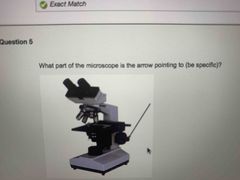
Front (Term) |
Fine focus knob |
|
|
You must only use the find focus knob when using the higher objective lenses. True or false? |
True |
|
|
Why do you sometimes use the oil immersion Lens? |
Oil immersion is used with high magnification lens in order to maintain high resolution because the immersion oil has a refraction index as glass the resolution is not lost in the image is clear. |
|
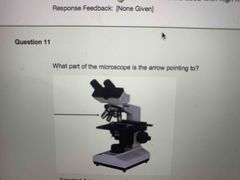
Front (Term) |
Objective lens |
|
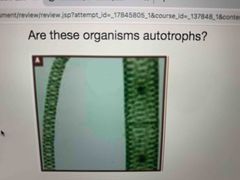
Front (Term) |
Yes |
|
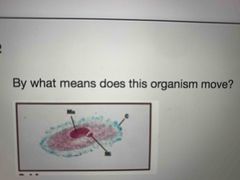
Front (Term) |
Cilia |
|
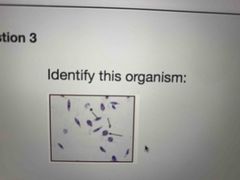
Front (Term) |
Leishmania donovani |
|
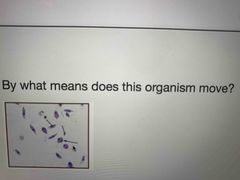
Front (Term) |
Flagella |
|
|
Are protists eukaryotic or prokaryotic? |
Eukaryotic |
|
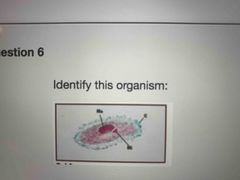
Front (Term) |
Paramecium |
|
|
List the two domains that only have prokaryotic organisms. |
Bacteria and Archaea |
|
|
List three different major differences between prokaryotic organisms and eukaryotic organisms? |
Prokaryotes have no nucleus, no membrane-bound organelle’s, smaller, no microtubules, ribosomes 70S Eukaryotes have a nucleus, membrane organelles, larger, have microtubules, ribosomes 80 S |
|
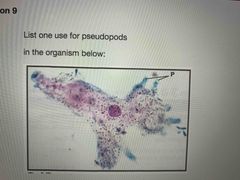
Front (Term) |
Pseudopods are used for movement and capturing food |
|
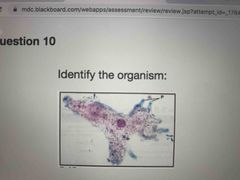
Front (Term) |
Amoeba |
|
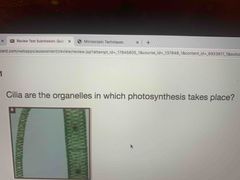
True or false? |
Falls |
|
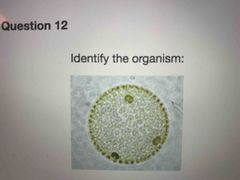
Front (Term) |
Volvox |
|
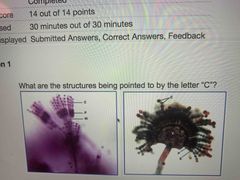
Front (Term) |
Conidia |
|
|
What is the name of the collective hyphae of the mushroom? |
Mycelium |
|
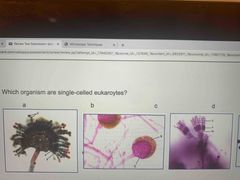
Front (Term) |
D |
|

Front (Term) |
A |
|
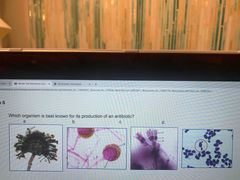
Front (Term) |
C |
|
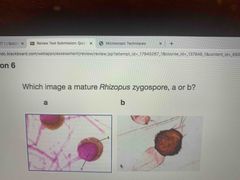
Front (Term) |
B |
|
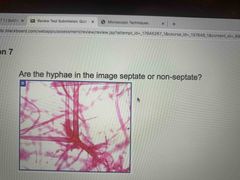
Front (Term) |
Non-septate |
|
|
What is the name in the polysaccharide found in the cell walls of fungi? |
Chitin |
|
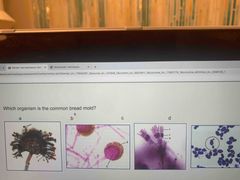
Front (Term) |
B |
|
|
Are fungi eukaryotic or prokaryotic? |
Eukaryotic |
|
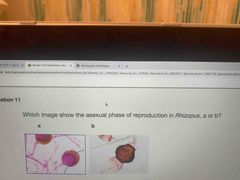
Front (Term) |
A |
|
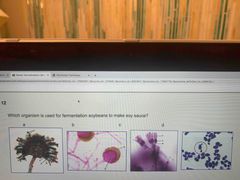
Front (Term) |
A |
|
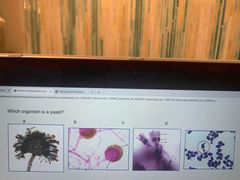
Front (Term) |
D |
|
|
Explain how and absorptive heterotrophs obtains food? |
Secrete exoenzymes into the environment then absorb the digestive nutrients. |
|
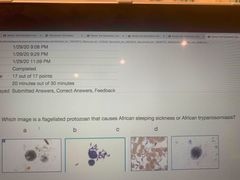
Front (Term) |
C |
|
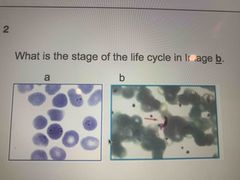
Front (Term) |
Gametocyte |
|

Front (Term) |
A |
|
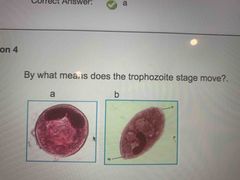
Front (Term) |
Cilia |
|
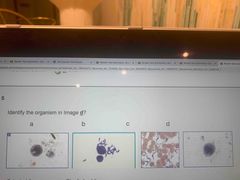
Front (Term) |
Giardia lamblia |
|
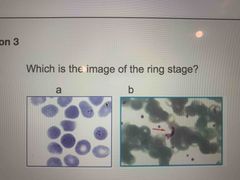
Front (Term) |
A (plasmodium falciparum). |
|
|
Are protozoans autotrophic or heterotrophic or both? |
Heterotrophic |
|

Front (Term) |
Malaria |
|

Front (Term) |
Red blood cells |
|
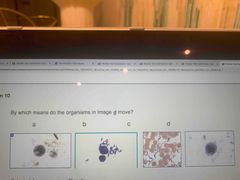
Front (Term) |
Flagella |
|
|
Are protozoans eukaryotic or prokaryotic? |
Eukaryotic |
|
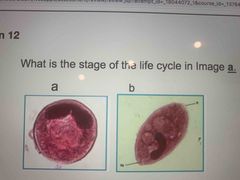
Front (Term) |
Cyst |
|
|
List and briefly describe the two typical life cycle stages of protozoans. |
Trophozoite and cyst stages (Active, vegetative, & resting) |
|
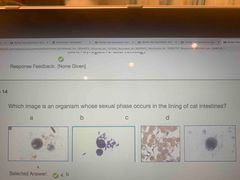
Front (Term) |
B |
|
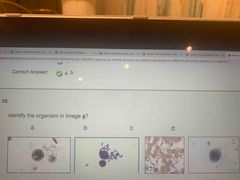
Front (Term) |
Entamoeba histolytica |
|
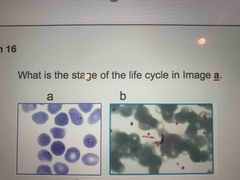
Front (Term) |
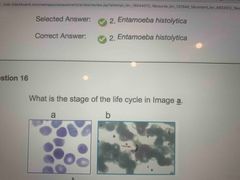
Trophozoite |
|
|
Front (Term) Find in quiz |
Ascaris lumbricoides |
|
|
Front (Term)find in quiz |
Enterobis vermicularis |
|
|
Front (Term)find in quiz |
Nematoda |
|
|
Front (Term)find in quiz |
Paragonimus westermani |
|
|
Front (Term) find in quiz |
Lymphatic vessels of lower body |
|
|
Front (Term) find in quiz |
Taenia |
|
|
Front (Term) find in quiz |
Paragonimus westermani |
|
|
Front (Term) find in quiz |
Ancylostoma duodenale |
|
|
Front (Term)find in wuiz |
Ancylostoma duodenale |
|
|
Why were most of the Helminth eggs found on slides of fecal smears? |
Parasitic worms usually spend some portion of their life cycle in the gastrointestinal tract. most of these are spread through fecal-oral route for infection. |
|
|
Front (Term) Find in quiz |
Ascaris lumbricoides |
|
|
Front (Term)find in quiz |
Wuchereria bancrofti |
|
|
What is the term for one segment of a tapeworm? |
Proglottids |
|
|
Front (Term)find in quiz |
Lungs and intestinal mucosa |
|
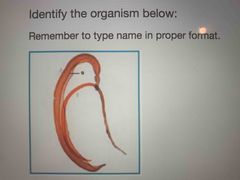
Front (Term) |
Schistosoma manisoni |
|
|
Front (Term) Find in quiz |
Dipylidium caninium |
|
|
Front (Term) find in quiz |
Echinoccocus granulosus |
|
|
Are tapeworms autotrophs or heterotrophs? |
Heterotrophs |
|
|
Front (Term)find in wuiz |
Schistosoma mansoni |
|
|
Cells are divided into what two major groups? What are they based on? |
Prokaryotes and eukaryotes. Size and complexity. |
|
|
Prokaryotes are further divided into what two domains? |
Archaea and bacteria |
|
|
Eukaryotes belong to a single domain and are divided into what four kingdoms? |
Protista Animalia Fungi Plantae |
|
|
Protozoans are unicellular eukaryotic heterotrophic micro organisms. True or false? |
True |
|
|
A typical protozoan lifecycle includes a vegetative _______ and a resting _______ stage. |
Trophozoite Cyst |
|
|
One protozoan classification scheme recognizes the following phylum’s: (3) (Include subphylums) |
1) Phylum Sarcomastigophora - subphylum Mastigophora (flagellates) -Subphylum Sarcodina (amoebas) - moves by PSEUDOPODS
2) Phylum Ciliophora (Ciliates)
3) Phylum Apicomplexa (Sporozoans and others) -usually non motile |
|
|
Sarcodines move by forming cytoplasmic extensions called _______? |
Pseudopods |
|
|
Ciliates oh they’re motility to the numerous ____ Covering the cell. |
Cilia |
|
|
Members of mastigophora Are characterized by (1)________ |
One or more flagella |
|
|
Sporozoans are Typically (1)________(mobility) and usually have (2)______ life cycles involving (3)_______ Reproduction in one host and (4)_______ in another. |
1- nonmotile 2- complex 3-asexual 4-sexual |
|
|
(1)______ Comprise a diverse group of simple (2)__________ ___________ Organisms with uncertain relatedness. |
1- algae 2- Photosynthetic eukaryotic |
|
|
(1) ______ _______ Are common and freshwater and are usually (2) ________ or (3) _________. (4) Division? |
1- green Algae 2- unicellular 3- colonial 4- Chlorophyta |
|
|
(1)________, Characterized by a spiral chloroplast and the large spherical colonies of (2) _______. |
1- Spirogyra 2- volvox |
|
|
Members of the kingdom (1) ______ are nonmotile eukaryotes. There’s a wall is usually made up of the (2) ________ __________. (3) Unlike animals that ingest then digest their food they are (4)_________ _________. That is they secrete (5)__________ Into the environment than absorb the digested nutrients. Most are (6) __________ The decompose that organic matter but some are (7)_________ of plants, animals, or humans. They are in formally divided into (8)_______ _______ and (9) _________ _______ Based on their overall appearance. |
1- Fungi 2- polysaccharide chitin 4- absorptive heterotrophs 5- exoenzymes 6- saprophytes 7- parasites 8- unicellular yeasts 9- filamentous molds |
|
|
Algae and fungi are _______ |
Protozoans |
|
|
______ has Numerous pseudopods used for movement and capturing food. Subphylum? |
Amoeba (a sarcodine) |
|
|
(1)________ (a______) has cilia around the edge of the cell. The macronucleus and micronucleus are also visible. (2) What is the function of the Cilia? |
1- Paramecium bursaria (a ciliate) 2-To move the cell as well as to sweep food into its mouth. |
|
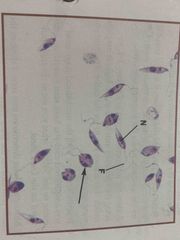
(1)________ _______ Note the anterior (2)______ and the (3)______. Two of the cells are ________. |
1- Leishmania donovani 2- flagellum 3- nucleus 4- dividing |
|
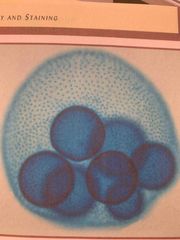
1)______ is a colonial green alga. 2) _______ cells are Join together to form the hollow spherical colony. 3) _____ Colonies are visible within the larger ones. |
1- volvox 2- flagellated 3-daughter |
|

(1)______ _______ (2) The “______ ______” Is shown in a wet mount preparation using phase contrast microscopy. (3) Short chains of cells (_______) Are visible in this field.
|
1) Saccharomyces cerevisiae 2) brewers yeast 3) pseudohyphae |
|

1)_______ 2) Notice of the spiral ______ and _____ in each cell. |
1- Spirogyra sport. 2- chloroplast ; nucleus |
|
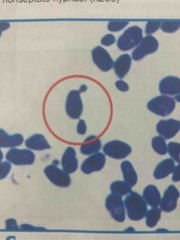
1) ______ _______ _____ cells 2) ___ shape and ____ 3) Part of the normal respiratory, Gastrointestinal and female urogenital tract flora. It may flourish and produce pathological condition such as ______ in the oral cavity, _________ of the female genitals, _________ _______ of the skin. 3) ________ _______ May follow infection of the lungs bronchi or kidneys. |
1- candida albicans vegetative 2- oval ; nuclei 3- thrush; vulvovaginitis; cutaneous candidiasis 4- systemic candidiasis |
|
|
1)________ Species are fast growing mold that produce white or gray-ish cottony growth. 2) The _______ Becomes darker with age as ________ Are produced giving it a salt and pepper appearance. 3) Lifecycle has both _____ and ____ phases. 4) Asexual= ______ |
1-rhizopus 2- mycelium; sporangia 3- sexual and asexual 4- sporangiophores |

